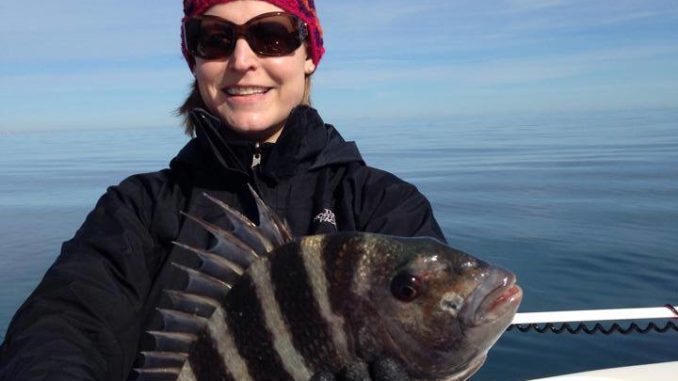
Weather permitting, go soak an oyster or clam and catch convict fish
Waves of winter weather have been whacking the coastline for five weeks now, but through the periods of snow, ice and freezing temperatures, South Carolina’s climate is resilient offering pleasant weather and calm seas just a few days later. And it makes for a perfect excuse to slip out into the ocean with a fishing rod in hand to catch a limit of sheepshead, aka convict fish, at the nearshore reefs right when they are putting on the feed bag.
Capt. Englis Glover of Murrells Inlet always finds time in the winter to check out the reefs, and over the past couple of weeks, he said the sheepshead have been more than willing to cooperate, making for easy fishing on calm days.
“This may be cold and miserable for some species of fish, but with (water) temperatures plummeting into the 40s, sheepshead are stacking up on all the nearshore reefs and structures to eat,” said Glover (843-655-5459). “These reefs are buffets for these oversized convicts as they are covered with a seemingly unlimited supply of food.”
Fishermen can reach the nearshore reefs just a few minutes after leaving the end of Murrells Inlet jetties. From concrete cones and reef balls to decommissioned armored personnel carriers and New York city subway cars, SCDNR and a selection of special-interest groups maintain many reefs out of Murrells Inlet. The reefs with some of the best sheepshead action happen to be the ones just minutes away from shore, including: the Paradise Reef, H.B. Springs Reef, Three-mile Reef, Pawley’s Reef, Grand Strand Saltwater Anglers Reef, 10-mile reef, and the 11-mile reef.
Glover prefers calm days and slick seas for sheepshead on the reefs. For the strong fights these fish provide, the bite is extremely subtle. Anglers must be able to detect any type of movement on the end of the line to get a hookup.
In an effort to counteract the delicate take and another missed opportunity, Glover uses braided line with zero-stretch and ties a jighead directly to the line without any special leader, swivel or other hardware. Fiddler crabs are the bait most people associate with sheepshead, but Glover uses something a little different to tempt the oversized ones that typically patrol these reefs during the winter.
“Expect the bite to be best at slack tide and always bring some oysters or clams with you to entice that big one into biting,” he says.
Sheepshead absolutely love oysters and clams, yet these slimy mollusks can seem impossible to keep on the hook when fresh. However, anglers can either dry them out in the sun or put them in a steamer for a few minutes to toughen them up.




Be the first to comment